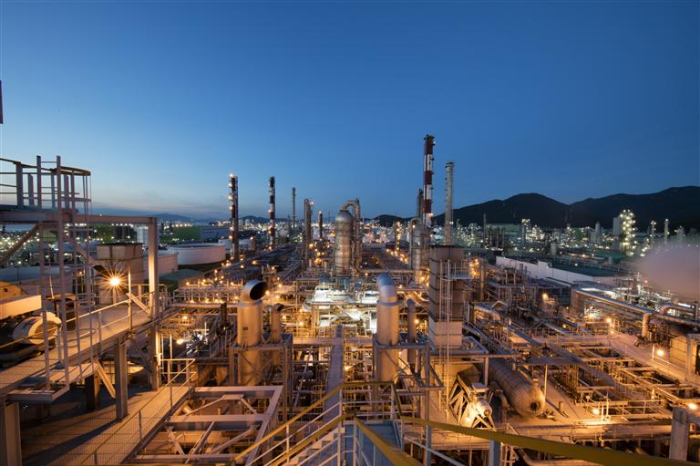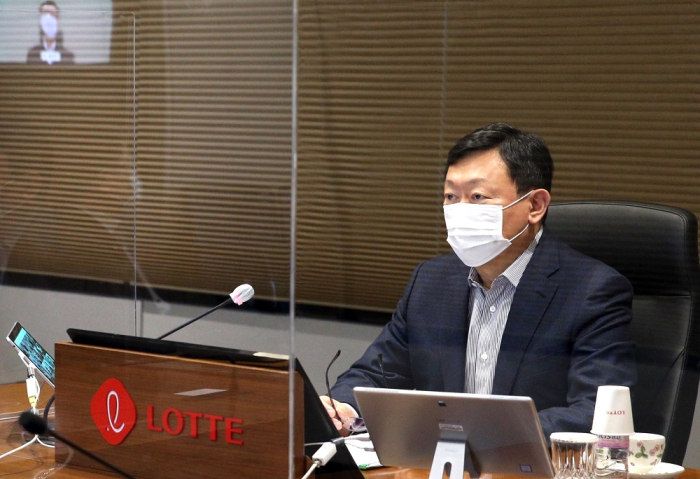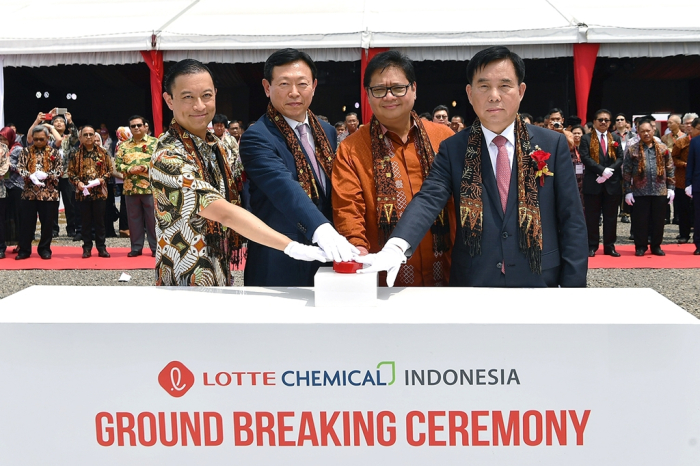Lotte Chemical seeks to acquire Japanese specialty chemical firms
Through the acquisition, Lotte aims to protect itself from the industry’s volatile boom-and-bust cycle
By Nov 22, 2021 (Gmt+09:00)
LG Chem to sell water filter business to Glenwood PE for $692 million


Kyobo Life poised to buy Japan’s SBI Group-owned savings bank


KT&G eyes overseas M&A after rejecting activist fund's offer


StockX in merger talks with Naver’s online reseller Kream


Mirae Asset to be named Korea Post’s core real estate fund operator



Lotte Chemical Corp. is seeking to acquire major stakes in a few specialty chemical companies in Japan as the South Korean company aims to expand its business beyond basic petrochemical products such as ethylene.
The chemical unit of Lotte Group, Korea’s fifth-largest conglomerate, is looking to buy part or entire stakes in two to three Japanese manufacturers of value-added specialty chemical products used in the mobility-related sector, according to industry sources on Monday.
Through the acquisition, Lotte aims to transform into a petrochemical company with a greater share of the global market for raw materials used in the mobility and eco-friendly businesses, the sources said.
A Lotte Chemical official said the company has been in negotiations with several Japanese chemical companies, but talks have broken down over acquisition price differences.
“We’re actively seeking M&As and willing to sign a deal if the right company is up for grabs,” he said.
As Korea’s top ethylene producer, Lotte's main products are basic petrochemical goods that tend to be sensitive to business cycles.
In 2017, Lotte Chemical’s operating profit, mostly from its basic petrochemicals business, stood at 2.93 trillion won ($2.5 billion). Its profit fell to 1.11 trillion won in 2019 and significantly declined to 356.9 billion won last year amid the COVID-19 pandemic.
Analysts expect the company’s operating profit to claw back to the 2 trillion won level this year.

VOLATILE BOOM-AND-BUST CYCLE
“Traditionally, chemical companies have been easily exposed to the boom-and-bust cycle, and Lotte wants to limit its exposure to the cycle by expanding into the specialty products business,” said an industry official.
In recent years, Lotte Group Chairman Shin Dong-bin has been diversifying the conglomerate’s business portfolio into value-added specialty chemical products and even into the hydrogen and ammonia business.
Earlier this year, Lotte Chemical sought to acquire the synthetic rubber operation of Japan’s JSR Corp. but the plan went awry due to unknown reasons.
The elastomer business segment produces general-purpose synthetic and specialty rubbers such as cathode binders used in rechargeable batteries.
The acquisition bid, if successful, would have strengthened Lotte’s core business that makes products such as butadiene and styrene monomer, used as raw materials for synthetic rubber products.
Back in 2019, Lotte made an aborted attempt to buy Hitachi Chemical Co., a rechargeable battery material maker. In May of last year, Lotte purchased a 4.7% stake in Showa Denko, which had beat Lotte to acquire Hitachi Chemical.

HYDROGEN BUSINESS
Lotte Chemical said in July of this year it is investing 4.4 trillion won in hydrogen projects by 2030 to foster the business as a new growth driver.
Under its hydrogen growth roadmap, Green Promise 2030, Lotte Chemical said it aims to generate annual sales of 3 trillion won with an operating profit margin of over 10% in its hydrogen-related business alone by the 2030 pledge date.
The company is also part of 13 Korean companies that in July formed an extensive green ammonia alliance with five public institutions.
Green ammonia refers to ammonia that is produced through 100% renewable and carbon-free processes. It can be made by combining green hydrogen, also made from 100% renewable energy sources, with nitrogen from the air.
Green ammonia has become the center of attention in the global hydrogen sector due to its practicality in transporting green hydrogen.
Write to Kyung-Min Kang at Kkm1026@hankyung.com
In-Soo Nam edited this article.
-
 Plastic recyclingRecycled plastic in growing demand as Korean firms pursue ESG business
Plastic recyclingRecycled plastic in growing demand as Korean firms pursue ESG businessSep 27, 2021 (Gmt+09:00)
3 Min read -
 PetrochemicalsLotte to resume $4.4 bn Indonesia petrochemical project next year
PetrochemicalsLotte to resume $4.4 bn Indonesia petrochemical project next yearAug 01, 2021 (Gmt+09:00)
2 Min read -
 Hydrogen economyKorea forms ambitious public-private green ammonia alliance
Hydrogen economyKorea forms ambitious public-private green ammonia allianceJul 16, 2021 (Gmt+09:00)
3 Min read -
 Hydrogen economyLotte Chemical goes green with $3.8 bn investment in hydrogen business
Hydrogen economyLotte Chemical goes green with $3.8 bn investment in hydrogen businessJul 13, 2021 (Gmt+09:00)
2 Min read -
 M&AsLotte Chem ready to bid for JSR’s synthetic rubber business
M&AsLotte Chem ready to bid for JSR’s synthetic rubber businessJan 20, 2021 (Gmt+09:00)
3 Min read -
 Rubber business disposalJapan’s JSR reaches out to Lotte, LG for sale of synthetic rubber business
Rubber business disposalJapan’s JSR reaches out to Lotte, LG for sale of synthetic rubber businessJan 06, 2021 (Gmt+09:00)
2 Min read


